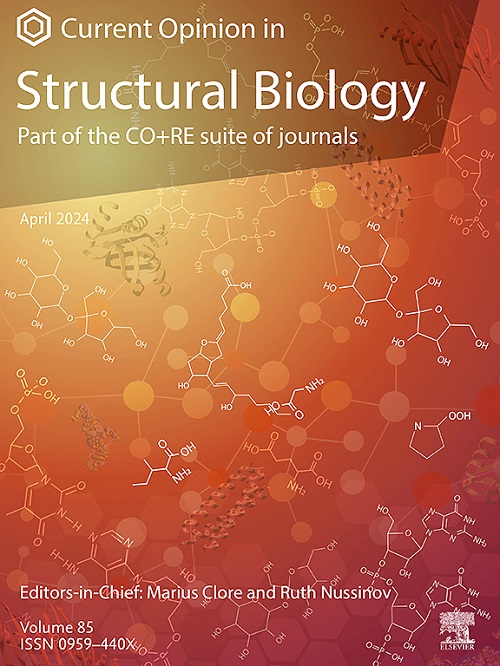脂质和生物膜对gpcr构象平衡的影响:来自核磁共振光谱的见解
IF 6.1
2区 生物学
Q1 BIOCHEMISTRY & MOLECULAR BIOLOGY
引用次数: 0
摘要
G蛋白偶联受体(gpcr)在细胞膜、复杂和动态环境中起作用。而不是作为一个被动的背景,脂质膜积极影响GPCR药物反应和信号。利用核磁共振(NMR)光谱学的研究揭示了受体-脂质相互作用的关键见解,通过核磁共振实验与许多不同的膜系统和生理温度的兼容性,更紧密地反映了天然细胞环境。核磁共振数据揭示了新的机制见解,解释了特定脂质如何调节GPCR激活,大块膜特性如何影响受体动力学,以及不同的膜模拟物如何影响GPCR行为。这些发现为连接体外结构研究与体内生物学和药理学数据建立了框架。本文章由计算机程序翻译,如有差异,请以英文原文为准。
The influence of lipids and biological membranes on the conformational equilibria of GPCRs: Insights from NMR spectroscopy
G protein-coupled receptors (GPCRs) function within cellular membranes, complex and dynamic environments. Rather than serving as a passive background, lipid membranes actively influence GPCR drug responses and signaling. Studies utilizing nuclear magnetic resonance (NMR) spectroscopy have revealed key insights into receptor–lipid interactions, enabled by the compatibility of NMR experiments with many different membrane systems and physiological temperature, conditions more closely reflecting the native cellular environment. NMR data have revealed new mechanistic insights that explain how specific lipids regulate GPCR activation, how bulk membrane properties influence receptor dynamics, and how different membrane mimetics affect GPCR behavior. These findings establish a framework for bridging in vitro structural studies with in vivo biological and pharmacological data.
求助全文
通过发布文献求助,成功后即可免费获取论文全文。
去求助
来源期刊

Current opinion in structural biology
生物-生化与分子生物学
CiteScore
12.20
自引率
2.90%
发文量
179
审稿时长
6-12 weeks
期刊介绍:
Current Opinion in Structural Biology (COSB) aims to stimulate scientifically grounded, interdisciplinary, multi-scale debate and exchange of ideas. It contains polished, concise and timely reviews and opinions, with particular emphasis on those articles published in the past two years. In addition to describing recent trends, the authors are encouraged to give their subjective opinion of the topics discussed.
In COSB, we help the reader by providing in a systematic manner:
1. The views of experts on current advances in their field in a clear and readable form.
2. Evaluations of the most interesting papers, annotated by experts, from the great wealth of original publications.
[...]
The subject of Structural Biology is divided into twelve themed sections, each of which is reviewed once a year. Each issue contains two sections, and the amount of space devoted to each section is related to its importance.
-Folding and Binding-
Nucleic acids and their protein complexes-
Macromolecular Machines-
Theory and Simulation-
Sequences and Topology-
New constructs and expression of proteins-
Membranes-
Engineering and Design-
Carbohydrate-protein interactions and glycosylation-
Biophysical and molecular biological methods-
Multi-protein assemblies in signalling-
Catalysis and Regulation
 求助内容:
求助内容: 应助结果提醒方式:
应助结果提醒方式:


